Search
Did you mean: Antigone?
Search Results
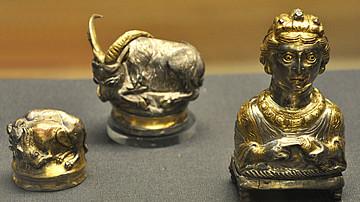
Article
The Roman Hoxne Hoard
The Hoxne Hoard is the largest cache of late Roman gold found anywhere in the Roman Empire. Discovered by a metal detectorist in Suffolk, in the east of England in 1992 CE, the incredible collection contains 14,865 late-4th and early-5th...

Image
Roman Rule in Britain c. 43 - 410 CE - Four Centuries of Empire at the Edge of the World
This map illustrates the expansion and administration of Roman rule in Britain between approximately 43 and 410 CE, tracing the transformation of the island into a Roman province. From initial military conquest to eventual withdrawal, Britannia...
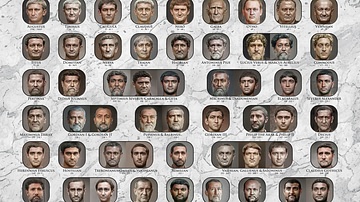
Image
Artistic Facial Reconstructions of Roman Emperors
A poster with facial reconstructions of Roman emperors who ruled during the Principate, from the reign of Augustus (r. 27 BCE-14 CE) to Carinus (r. 283-285 CE). These photorealistic representations are only best guesses at how their subjects...
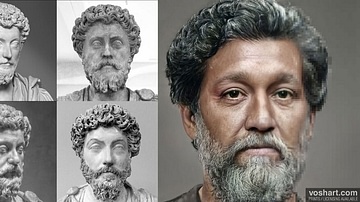
Image
Marcus Aurelius (Artistic Facial Reconstruction)
A photorealistic representation of what the Roman emperor Marcus Aurelius (r. 161-180 CE) may have looked like. Based on contemporary and near contemporary descriptions, as well as archaeological evidence. Pictured alongside the reconstruction...
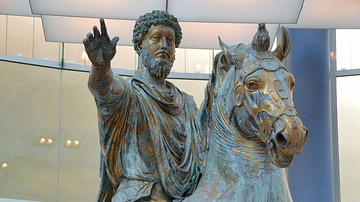
Image
Equestrian Statue of Marcus Aurelius
The Equestrian Statue of Marcus Aurelius is an ancient Roman statue in gilded bronze. The statue was erected in 175 CE. Its original location is debated: the Roman Forum and Piazza Colonna have been proposed. (Capitoline Museums, Palazzo...
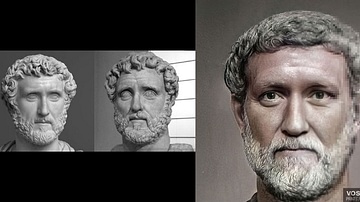
Image
Antoninus Pius (Artistic Facial Reconstruction)
A photorealistic representation of what the Roman emperor Antoninus Pius (r. 138-161 CE) may have looked like. Based on contemporary and near contemporary descriptions, as well as archaeological evidence. Pictured alongside the reconstruction...

Image
Roman Votive Male Torso, from Isola Farnese
Ancient Romans often dedicated votive objects to specific gods associated with healing in the hopes of recovery. These objects were in the form or representation of the affected body part and would be left at the temple of a god. This...
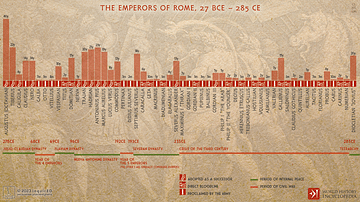
Image
The Emperors of Rome, 27 BCE - 285 CE
An infographic depicting the timeline of the emperors of Rome from the ascension of Caesar Augustus (Octavian) in 27 BCE until the end of the Crisis of the Third Century and the onset of the Tetrarchy under Diocletian "Jovius" in 285 CE through...
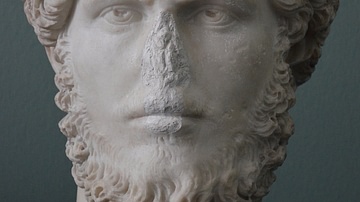
Image
Bust of Roman Emperor Lucius Verus
Marble head of Roman Emperor Lucius Verus, c. 160-170 CE. (Ny Carlsberg Glyptotek, Copenhagen)
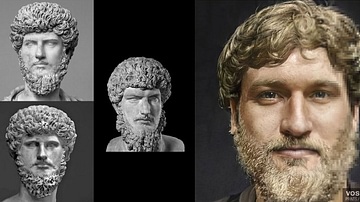
Image
Lucius Verus (Artistic Facial Reconstruction)
A photorealistic representation of what the Roman emperor Lucius Verus (r. 161-169 CE) may have looked like. Based on contemporary and near contemporary descriptions, as well as archaeological evidence. Pictured alongside the reconstruction...